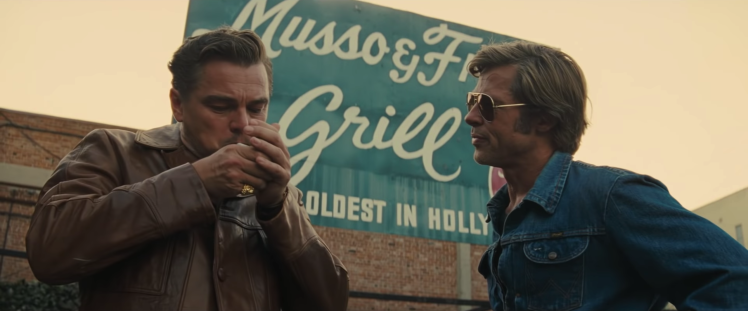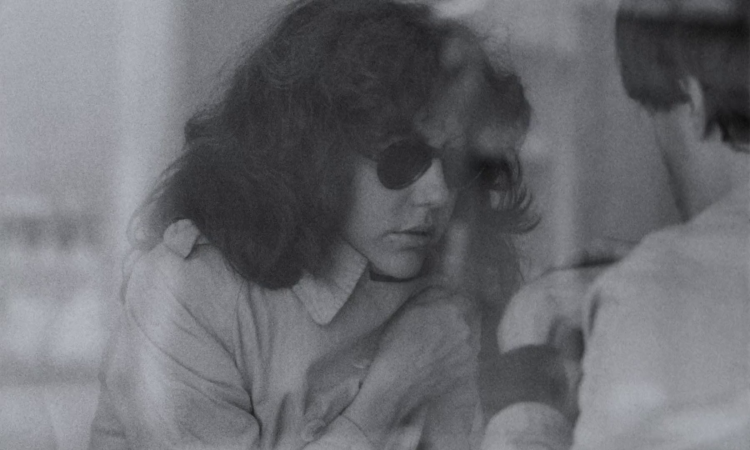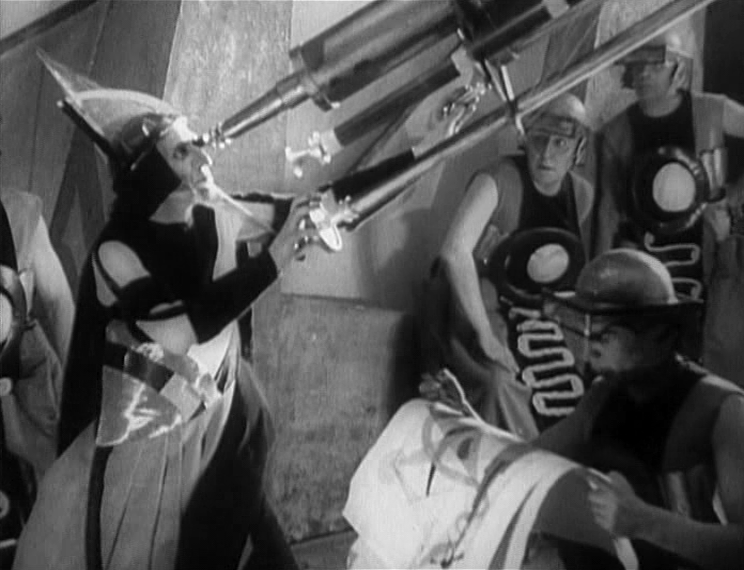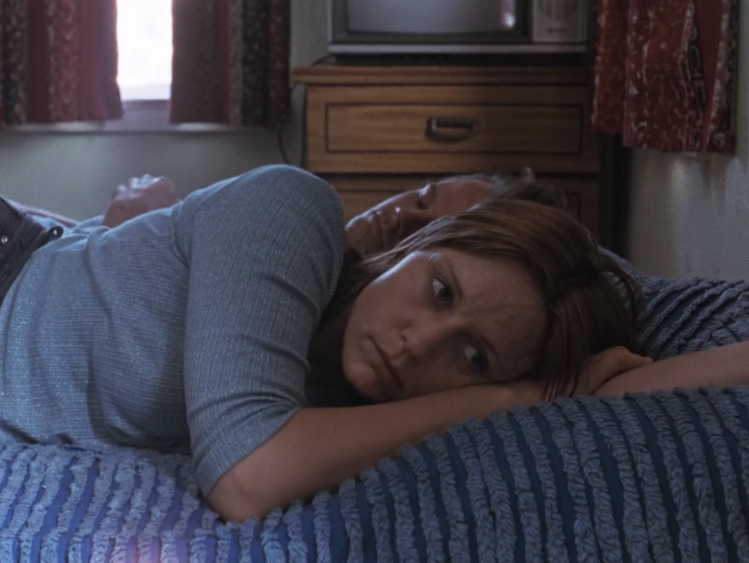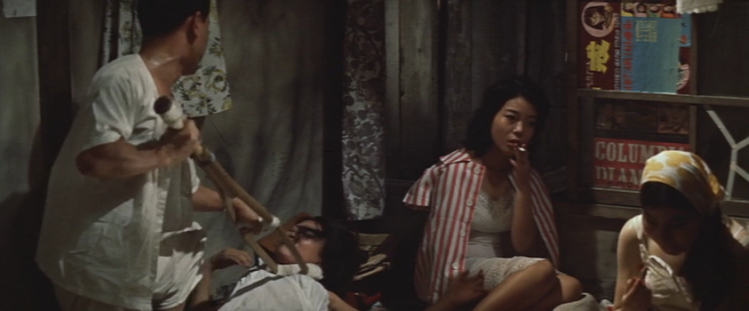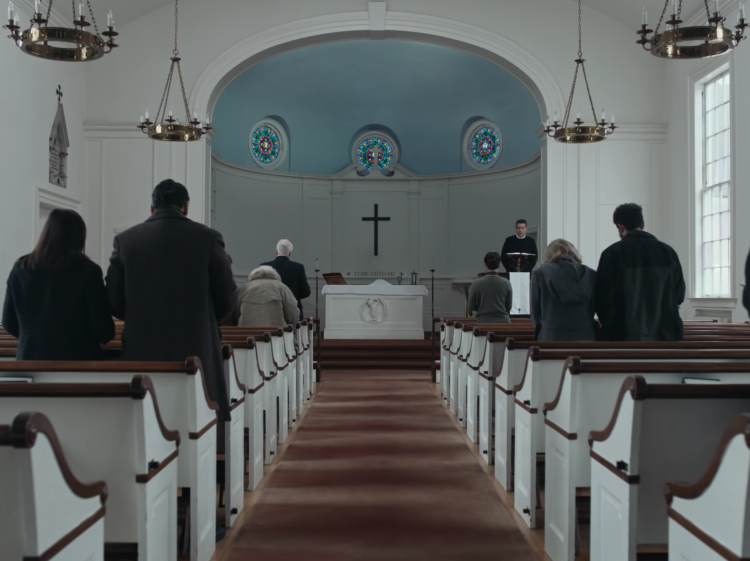This blog entry contains spoilers.
Rick Dalton, the central character in Quentin Tarantino’s Once Upon a Time… in Hollywood (2019), is an erstwhile leading man who keeps his career afloat between pilot seasons by doing guest spots on a variety of weekly TV shows, typically playing the heavy. In the clips we see of Dalton’s cancelled western series, Bounty Law, he embodies the clean-cut masculine ideal of the 1950s and early 1960s, but when he arrives on the set of a different cowboy show a few years later, he finds that times have changed. The director tells him he wants to go in a different direction with Dalton’s appearance, giving him straggly hair, a thick Zapata moustache, and a hippyish suede jacket that would not look out of place on stage at Woodstock. Without being anachronistic, the director explains, he wants to find the point where 1869 overlaps with 1969.
There is an important point being made here about how movies and TV shows portray the past: No matter how historically accurate they purport to be, all costume dramas reflect the priorities of the time in which they were made (and Tarantino’s film is no exception). By the end of the 1960s, it was already anachronistic to make a Western like Rio Bravo (1959)—although this did not stop Howard Hawks from trying, with diminishing returns, in El Dorado (1966) and Rio Lobo (1970)—because the world, and the audience, had already moved on. This is not to say, however, that Tarantino is a postmodern skeptic, for whom the past is unknowable; rather than foregrounding how our knowledge of history is always mediated through cultural texts, Once Upon a Time… suggests that, for Tarantino, forgotten TV shows and commercial movies, posters, pop records, comic books, and sensational news stories like the Tate-LaBianca murders are the past, or at least the only part of it worth knowing. As Jonathan Rosenbaum wrote of Pulp Fiction (1994), Tarantino’s overall project here is “to evict real life and real people from the art film and replace them with generic teases and assorted hommages [sic].” In other words, Tarantino’s films displace knowledge of the world (discovery) with a knowingness about pop culture (recognition).
Less disciplined as storytelling than Pulp Fiction and Inglourious Basterds (2009), though not as empty as Death Proof (2007)—which presumed an interest in long, devout conversations about obscure 1960s pop albums, trashy car chase movies, and French Vogue that I personally do not share—Once Upon a Time… has an agreeably rambling plot that, for most of the film’s 160 minutes, tracks the separate and largely undramatic daily activities of three characters over two days in February, 1969 and a third day that August in a manner reminiscent of two Los Angeles-set art films of the period, Jacques Demy’s Model Shop (1969) and Michelangelo Antonioni’s Zabriskie Point (1970). While Dalton (Leonardo DiCapprio), a high-functioning alcoholic, struggles to remember his lines on set and frequently breaks down in tears to the point where I wanted to shout at the screen, “Come on, son, grow a pair,” his former stunt man and BFF, Cliff Booth (Brad Pitt), picks up a member of the Manson Family who goes by the nickname Pussycat (Margaret Qualley) and gives her a ride back to Spahn’s Movie Ranch. At the same time, in another part of town, Dalton’s new neighbour, Sharon Tate (Margot Robbie), goes to a movie theatre to watch herself in a mediocre comedy starring a frail-looking Dean Martin. As in Model Shop and Zabriskie Point, it is almost as if the sprawling layout of the city dictated a dispersal of the narrative, although the aleatory, quasi-documentary approaches of Demy and Antonioni evince a curiosity about the reality of 1960s Los Angeles and the counterculture that is nowhere in evidence in Tarantino’s film.
Despite the film’s meandering narrative and leisurely pacing (which, for me, are part of its charm), the characterization of Tate is disappointingly thin. It is not so much that Tarantino gives her so little dialogue, or that the film tells us no more about her life than we could read on Wikipedia (we find out a great deal more about Dalton’s fictional career, and even his reading tastes, than Tate’s), but that Tarantino has not made the effort to imagine her as a character. Tellingly, when Tate and her husband, Roman Polanski (Rafal Zawierucha), attend a party at the Playboy Mansion, the film privileges Steve McQueen’s (Damian Lewis) perceptions of their marriage over Tate and Polanski’s. Indeed, Tarantino seems even more uncertain about how to deal with Polanski as a character in the #MeToo era than he does about Tate: How can spectators sympathize with Tate while despising the man she is happily married to for a crime he committed several years after the story takes place? Tarantino merely ducks the issue by keeping Polanski offscreen as much as possible and giving him virtually no dialogue.
The film is also limited as a portrayal of the Manson Family. Indeed, it is surprising just how little we see of Charles Manson (Damon Herriman), who appears only once in an early scene where he turns up unexpectedly at the Tate-Polanski house, which he thinks is still owned by record producer Terry Melcher. Given what a loathsome and boring person Manson was, his minimal presence here might seem at first glance to be in the movie’s favour, but as a result, the film fails to give us any sense of the Manson Family as a cult. Thus, the bulk of our antipathy falls on Manson’s followers—who were, after all, his victims as well. Tarantino even rewrites history to give the female cult members more agency than they likely had in real life: Just as four of Manson’s followers are about to go into Tate’s house on August 8, 1969, Susan “Sadie” Atkins (Mikey Madison) proposes that it would be more poetically apt for them to murder Dalton instead, and as they are walking up the driveway, Linda Kassabian (Maya Hawke) runs back to the car and drives off, implying that Manson’s control over his followers was less than absolute. The film also elides the fact that the real Manson ordered Lynette “Squeaky” Fromme (an unrecognizable Dakota Fanning), as well as several other girls, to have sex with George Spahn (Bruce Dern) so that, in the film, they appear to have a consensual, monogamous relationship—and, oddly enough, the fictional Fromme and Spahn make a more convincing onscreen couple than Polanski and Tate. By fudging the historical record in this way, Tarantino makes it possible for spectators to enjoy the film’s climatic bloodbath—in which Atkins, Charles “Tex” Watson (Austin Butler), and Patricia “Katie” Krenwinkel (Madisen Beaty) get bludgeoned, chewed up, and burned alive—as a wish-fulfillment fantasy. (Did it make me feel good when Booth destroyed Atkins’ face with a can of dog food? You bet it did.)
Without minimizing the horror of the Tate-LaBianca murders, Reginald Harkema’s little-seen indie film Leslie, My Name Is Evil (2009) suggests that the media hysteria surrounding the trial of Manson and his followers represented a form of mass psychic displacement, wherein the crimes of the Manson Family served as a scapegoat for the even more spectacular violence then being perpetrated by US foreign policy in Southeast Asia. Notwithstanding Pussycat’s passing remark that people are being murdered everyday in Vietnam (she does not specify whether she is referring to US servicemen, Vietcong guerrillas, North Vietnamese soldiers, or civilians, implying that all of these deaths are morally equivalent), Tarantino’s priorities are the inverse of Harkema’s: Ultimately, the film wants us to despise Manson’s followers and cheer for the gruesome deaths of three of them rather than, say, the perpetrators of the massacre at My Lai—whom, unlike Manson’s followers, went largely unpunished. Rosenbaum has argued that Dalton’s use of a flamethrower to deliver the coup de grâce can be read as an unconscious allusion to the American military’s use of napalm against the people of Vietnam, which can only be represented in a displaced form, and given Madison’s Asiatic features, this interpretation seems inescapable. Released at a time when US influence in the world is in decline, due in part to the rise of China, Once Upon a Time… nostalgically harkens back to an era when American men proved their masculinity by incinerating yellow children.
